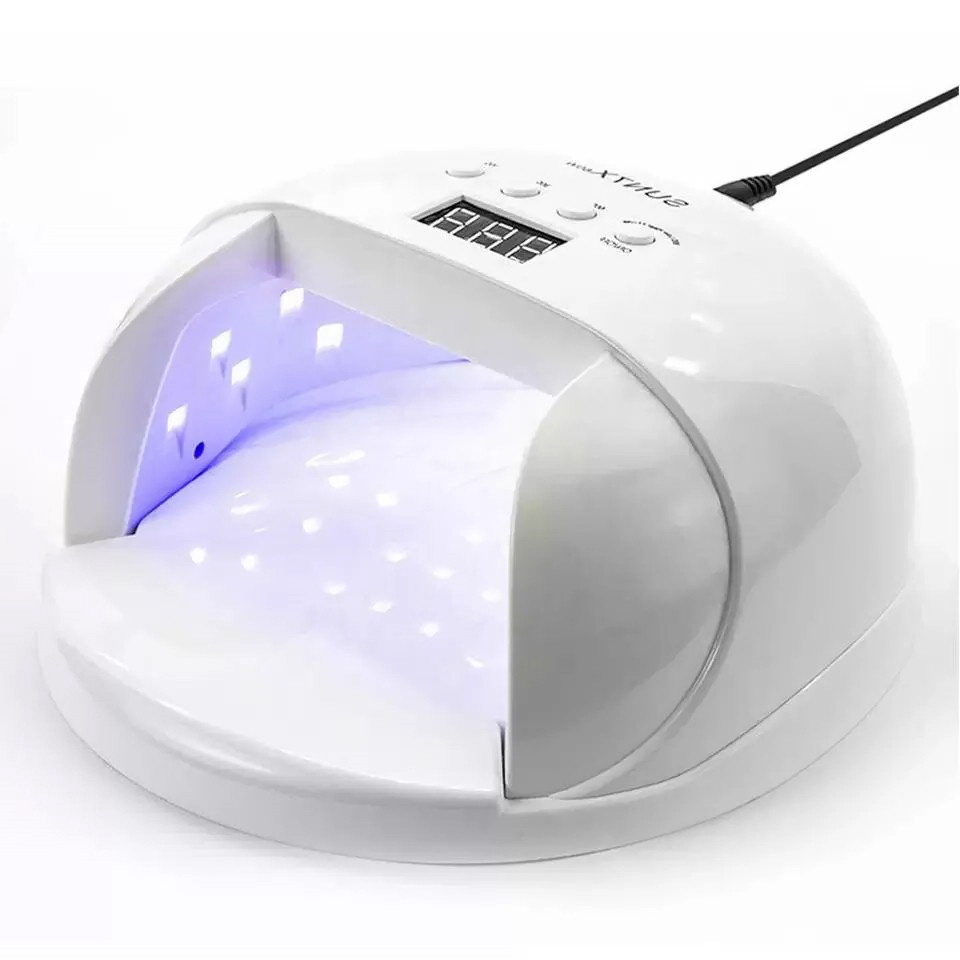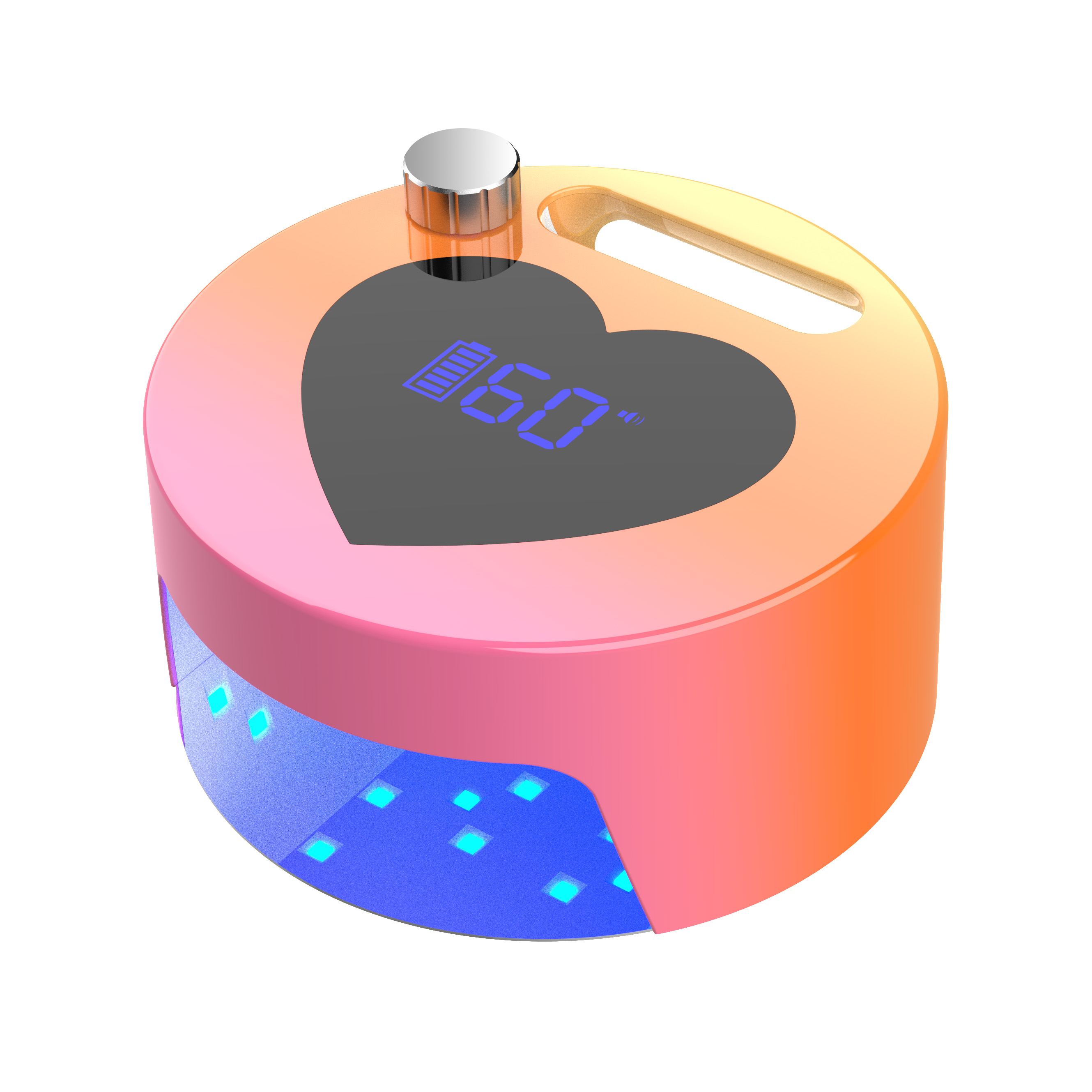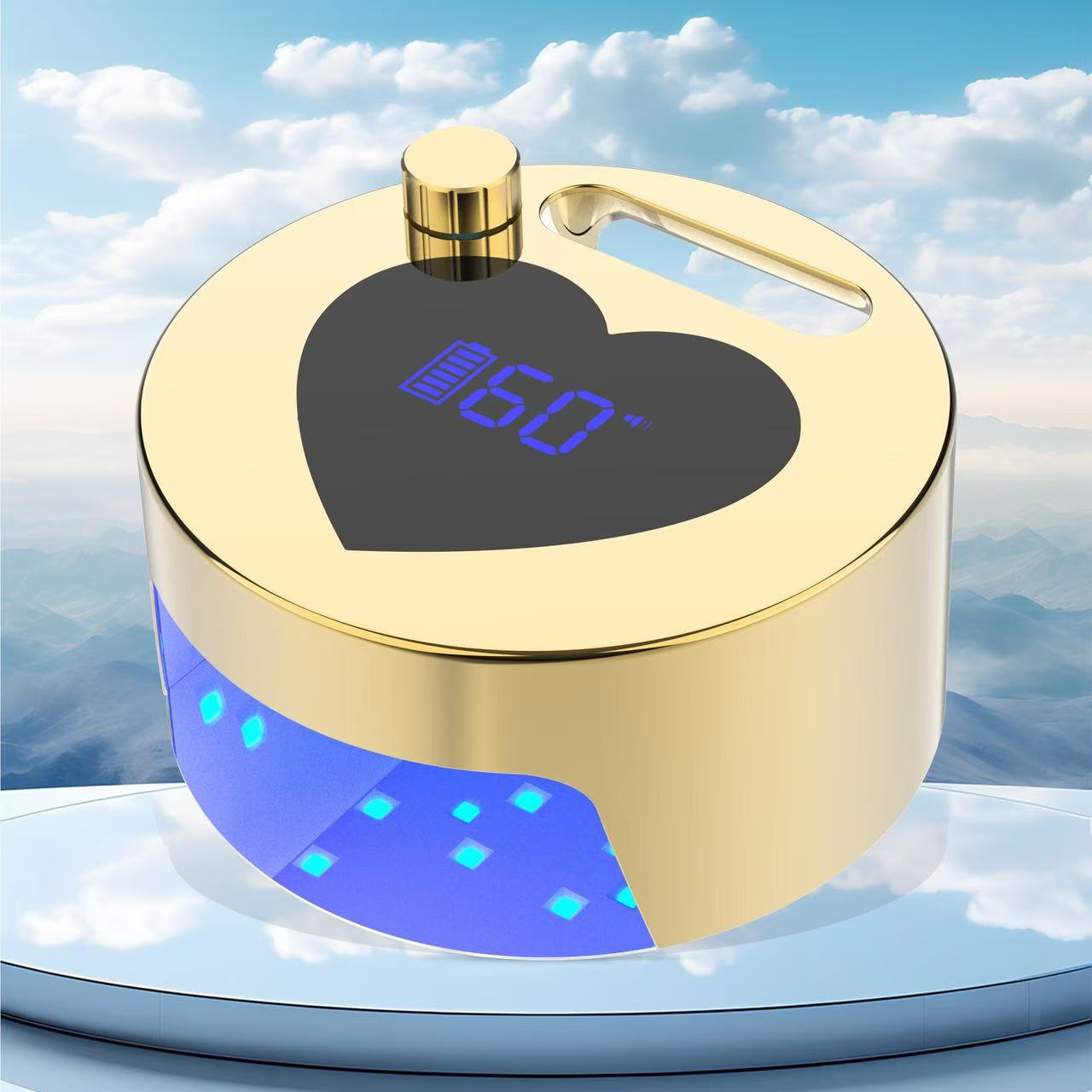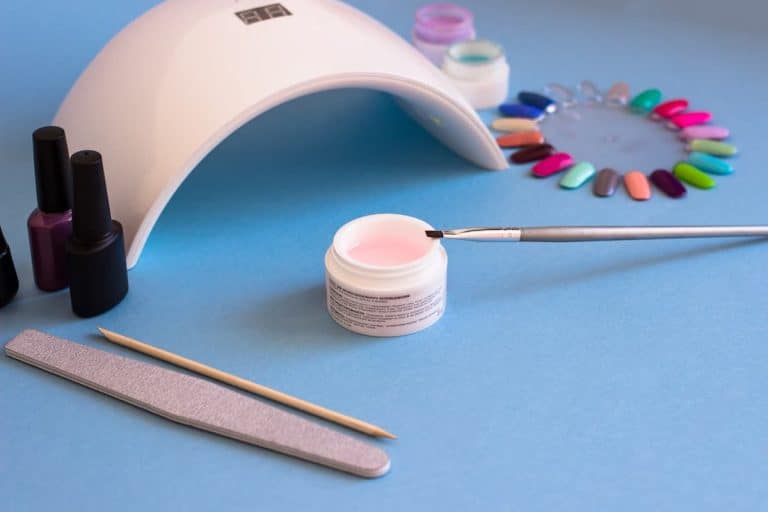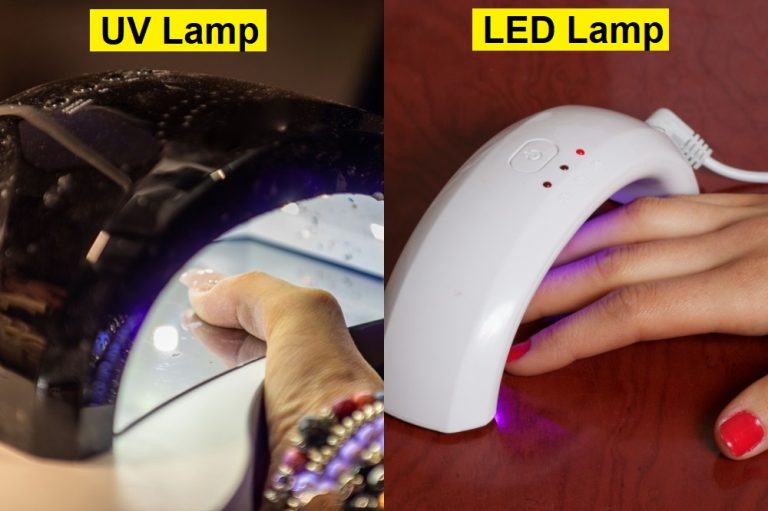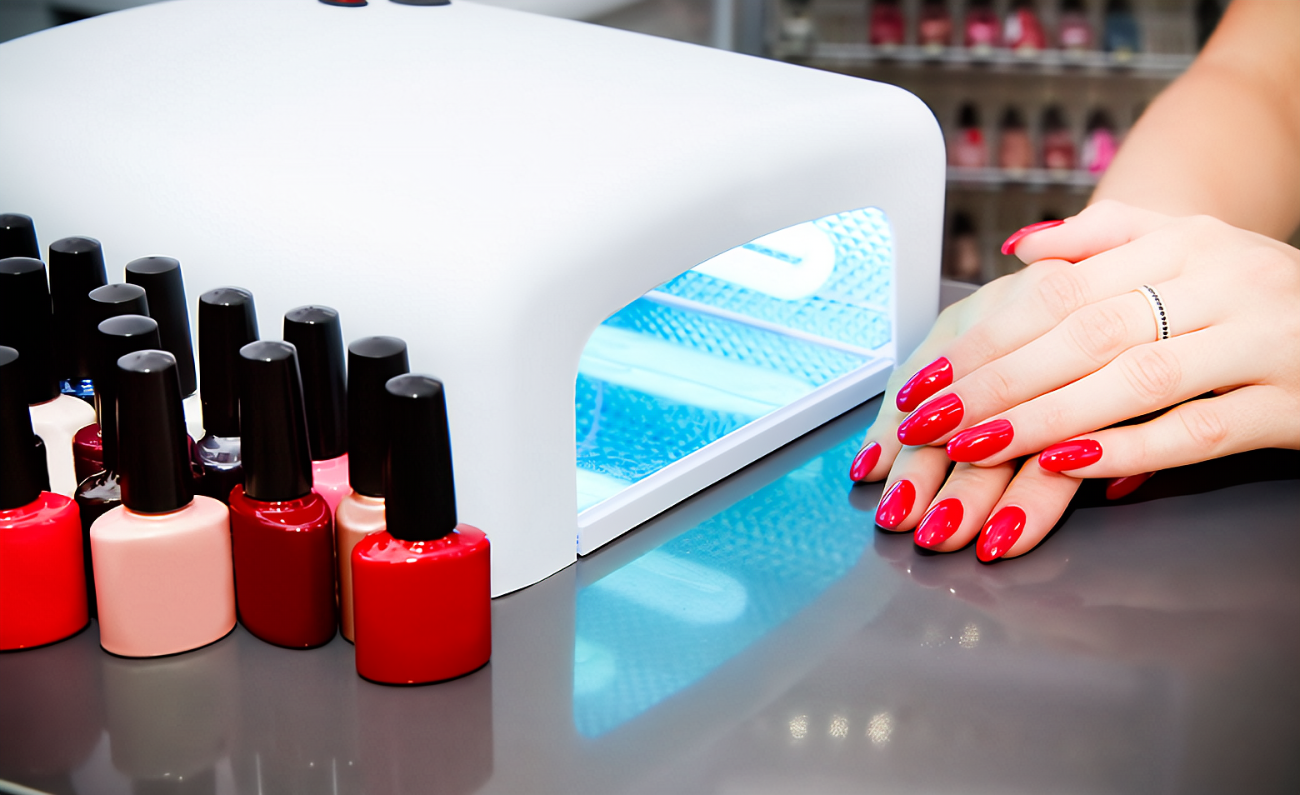Welcome to iksbeauty, your premium destination for customized nail solutions! In this article, we delve into a crucial question that concerns many nail enthusiasts and salon-goers: Can UV nail lamps potentially burn your skin? UV nail lamps have revolutionized the nail industry, offering faster and more durable manicures. However, there have been concerns about the safety of these lamps, particularly regarding their impact on the skin.
In this comprehensive analysis, we will explore the working principle of UV nail lamps, examine their potential effects on the skin, and provide essential safety tips to ensure a worry-free manicure experience. Our mission is to equip you with the knowledge to make informed decisions about your nail care routine while prioritizing the health and well-being of your skin.
Join us on this enlightening journey to uncover the truth behind UV nail lamps and their impact on your skin. Let’s separate fact from fiction and empower you with the insights you need for a beautiful and safe nail enhancement experience. So, let’s dive in and explore the world of UV nail lamps and skin safety together!
What is a UV Nail Lamp?
UV nail lamps are specialized devices used for curing UV nail polish. These lamps emit ultraviolet (UV) light, which triggers a chemical reaction in the UV nail polish, causing it to dry and harden quickly. They have become a staple in the nail industry, offering efficient and long-lasting manicures.
UV nail lamps typically consist of several UV light bulbs that emit specific wavelengths to activate the photoinitiators present in UV nail polish. These photoinitiators, upon exposure to UV light, initiate the polymerization process, transforming the liquid nail polish into a solid, durable coating on the nails.
Their widespread usage in salons and at-home nail care routines has made them an integral part of achieving flawless, chip-resistant manicures. However, concerns have been raised about their potential impact on the skin, leading to the question: Can UV nail lamps burn your skin?
In the following sections, we will delve deeper into the working principle of UV nail lamps, their potential effects on the skin, and provide essential tips to ensure a safe and enjoyable manicure experience. Stay tuned to gain valuable insights and dispel any myths surrounding the use of UV nail lamps.
UV Nail Lamp Working Principle
UV nail lamps operate based on a simple yet effective principle that facilitates the curing of UV nail polish. These lamps emit specific wavelengths of ultraviolet (UV) light, typically in the UVA range, to trigger a photopolymerization process in the UV nail polish.
1. Emission of UV Light: When the UV nail lamp is turned on, it emits UVA light, which is essential for activating the photoinitiators in the UV nail polish. Photoinitiators are light-sensitive chemicals present in the nail polish formula.
2. Activating Photoinitiators: As the UV light from the lamp reaches the nail surface coated with UV nail polish, it interacts with the photoinitiators. These photoinitiators absorb the UV light energy and undergo a chemical reaction, breaking them down into highly reactive free radicals.
3. Polymerization Process: The free radicals created by the photoinitiators initiate a chain reaction called photopolymerization. During this process, the liquid UV nail polish starts to solidify and harden into a smooth and durable coating on the nails. As the photopolymerization progresses, the polish becomes resistant to smudging and chipping.
4. Drying and Curing: Within seconds or minutes, depending on the lamp’s wattage and the specific UV nail polish used, the entire curing process is completed. The once liquid nail polish transforms into a hard, glossy finish, giving you the perfect manicure that lasts for weeks.
It is crucial to note that the effectiveness of the curing process depends on the lamp’s UV light intensity and the compatibility with the nail polish brand used. Additionally, excessive exposure to UV light may have implications for skin safety, which will be addressed in later sections. Understanding the working principle of UV nail lamps helps users make informed decisions about their nail care routine and encourages responsible usage for a flawless and safe manicure experience.
Does UV Nail Lamp Affect the Skin?
UV nail lamps have been a subject of concern regarding their potential impact on the skin. In this section, iksbeauty explores the possible effects of UV nail lamps on the skin, discussing the risk of skin burns and other adverse reactions associated with UV exposure during nail curing. Additionally, the distinction between brief exposure and prolonged exposure will be explained to provide a comprehensive understanding of skin safety.
1. Potential Skin Burns: UV nail lamps emit UVA light, which is capable of penetrating the skin’s surface. Prolonged or repeated exposure to this UV radiation can lead to skin burns, similar to sunburns. Although the exposure time during a typical nail curing session is relatively short, it is essential to consider the cumulative effects over time, especially for frequent users.
2. Adverse Reactions: Apart from potential burns, some individuals may experience skin sensitivity or allergic reactions to UV light. Such reactions could manifest as redness, itchiness, or rash on the exposed skin areas, particularly on the hands.
3. Short Exposure vs. Long Exposure: The duration of exposure to UV light plays a crucial role in determining its effects on the skin. Brief exposure during nail curing sessions is generally considered safe for most individuals. However, long-term and intense exposure, as experienced by professional nail technicians or individuals who excessively use UV nail lamps, may carry a higher risk of skin damage.
It is vital for users to strike a balance between achieving beautiful manicures and ensuring skin safety. Implementing precautionary measures can significantly reduce the risk of adverse effects on the skin. The upcoming sections will provide essential safety tips and recommendations to help users enjoy their UV nail lamp experience while safeguarding their skin health. At iksbeauty, we prioritize our customers’ well-being, offering not only high-quality nail solutions but also reliable guidance for a safe and enjoyable nail enhancement journey.
The Connection between UV Nail Lamp and Skin Sensitivity
Research indicates that some individuals may exhibit higher sensitivity to UV light compared to others. In this section, iksbeauty delves into the association between UV nail lamps and skin sensitivity. We will explore the factors that influence skin sensitivity and discuss the potential effects of UV nail lamps on sensitive skin.
1. Factors Affecting Skin Sensitivity: Skin sensitivity to UV light can vary among individuals due to several factors, including genetics, skin type, and previous UV exposure history. Fair-skinned individuals and those with a history of sunburns or UV-induced reactions may be more susceptible to sensitivity from UV nail lamps.
2. Impact on Sensitive Skin: For individuals with sensitive skin, the UV exposure during nail curing sessions may lead to adverse reactions. These reactions can range from mild irritation, redness, or rash to more severe burns. Understanding one’s skin sensitivity and taking appropriate precautions is essential to minimize the risk of unwanted skin reactions.
3. Precautions for Sensitive Skin: To ensure a safe and pleasant UV nail lamp experience for those with sensitive skin, certain precautions can be taken:
- Patch Test: Before a full manicure session, perform a patch test on a small area of skin to check for any adverse reactions to UV exposure.
- Sunscreen Application: Applying a broad-spectrum sunscreen on the exposed areas of the hands can provide an additional layer of protection against UV rays.
- Shorter Exposure Time: Limiting the exposure time under the UV nail lamp can help reduce the risk of skin sensitivity reactions.
- Consulting a Dermatologist: If individuals have a history of skin sensitivity or allergies, consulting a dermatologist can provide personalized advice and recommendations.
At iksbeauty, we understand the diverse skin needs of our customers. We advocate responsible nail care practices and encourage users to be mindful of their skin’s unique characteristics. By being aware of skin sensitivity and implementing suitable precautions, users can continue to enjoy the benefits of UV nail lamps without compromising their skin health.
How to Protect Your Skin from UV Nail Lamp Harm?
iksbeauty cares about your skin health while delivering exceptional nail solutions. In this section, we provide valuable recommendations to help users safeguard their skin when using UV nail lamps. These suggestions include utilizing protective gloves, controlling exposure time, and maintaining an appropriate distance from the UV lamp.
1. Wear Protective Gloves: One of the most effective ways to shield your skin from potential UV exposure is to wear protective gloves during the nail curing process. Choose gloves made from UV-blocking materials to reduce the penetration of UV rays onto your hands and fingers.
2. Control Exposure Time: Moderating the exposure time under the UV nail lamp is crucial, especially if you have sensitive skin. Follow the manufacturer’s recommendations for the recommended curing time of the UV nail polish. Avoid extended exposure, as it may increase the risk of skin damage.
3. Maintain an Appropriate Distance: Positioning your hands at an appropriate distance from the UV nail lamp is essential. Placing your hands too close to the lamp may intensify the UV exposure and increase the risk of skin sensitivity reactions. Maintain the recommended distance to ensure even curing without compromising skin safety.
4. Use Sunscreen or Sunblock: Applying sunscreen or sunblock on your hands before the nail curing session can provide an extra layer of protection against UV radiation. Opt for broad-spectrum products with an SPF suitable for your skin type.
5. Take Breaks Between Sessions: If you frequently use UV nail lamps, consider taking breaks between sessions to allow your skin to recover from UV exposure. Giving your skin ample time to rest can help reduce the risk of adverse reactions.
6. Stay Informed and Seek Professional Advice: Stay informed about the latest advancements in UV nail lamp technology and safety practices. Additionally, if you have a history of skin sensitivity or allergies, consult a dermatologist for personalized advice on protecting your skin during nail curing sessions.
At iksbeauty, we prioritize your well-being. By following these simple yet effective recommendations, you can enjoy your UV nail lamp experience with confidence, knowing that you are taking proactive steps to protect your skin and maintain healthy, beautiful nails.
Common Misconceptions about UV Nail Lamps
As a leading beauty supplier, iksbeauty strives to provide accurate information and dispel common misconceptions surrounding UV nail lamps. In this section, we address some prevalent myths related to UV nail lamps, such as their equivalence to sun UV exposure and the risk of skin cancer. Let’s shed light on the real risks associated with UV lamp usage.
1. Myth: UV Lamps Emit Sun-Like UV Radiation Clarification: UV nail lamps used in the beauty industry primarily emit UVA light, which is different from the harmful UVB and UVC rays emitted by the sun. While prolonged exposure to UVB and UVC radiation can increase the risk of skin cancer and other skin issues, the level of UVA exposure from UV nail lamps is generally considered low and is designed for efficient nail curing.
2. Myth: UV Nail Lamps Cause Skin Cancer Clarification: Studies have shown that the level of UV exposure experienced during standard nail curing sessions is unlikely to cause skin cancer. The duration of UV exposure in a nail salon is relatively short compared to prolonged sun exposure. However, to minimize any potential risks, using protective measures and following safety guidelines is advisable, especially for individuals with a history of skin cancer or increased sensitivity to UV light.
3. Myth: UV Nail Lamps Damage Nails Permanently Clarification: When used responsibly and following proper nail care practices, UV nail lamps do not cause permanent damage to the nails. The curing process enhances the durability and longevity of the nail polish, leading to a long-lasting and glossy manicure. However, overexposure or misuse of the lamps can result in nail thinning or dehydration, emphasizing the importance of using the lamps correctly and in moderation.
4. Myth: All UV Nail Lamps are the Same Clarification: UV nail lamps come in different wattages, sizes, and technologies, and not all lamps are created equal. Higher wattage lamps may provide faster curing times but could potentially generate more heat. Investing in high-quality, reputable UV nail lamps designed for safe and efficient nail curing is essential to ensure a positive experience.
iksbeauty believes in providing accurate information to empower users to make informed decisions. Understanding the truth behind UV nail lamp usage helps users enjoy their manicures confidently, knowing that they can maintain beautiful nails while keeping their skin safe. Stay informed, and enjoy the best of UV nail lamp technology responsibly.
Safety Recommendations for Using UV Nail Lamps
iksbeauty is committed to ensuring your safety during your nail enhancement journey. In this section, we provide essential safety recommendations for using UV nail lamps, ensuring users use the equipment correctly and minimize potential impacts on the skin.
1. Read and Follow Manufacturer’s Instructions: Before using a UV nail lamp, thoroughly read and understand the manufacturer’s instructions and guidelines. Each lamp may have specific recommendations for usage, including the recommended curing time, distance from the lamp, and power settings.
2. Use UV-Blocking Gloves: Consider using UV-blocking gloves during the nail curing process to shield your hands from UV radiation. These gloves act as a barrier, reducing direct skin exposure and protecting your hands from potential sensitivity reactions.
3. Control Exposure Time: Limit the exposure time under the UV nail lamp according to the manufacturer’s instructions and the specific nail polish brand you are using. Avoid prolonged exposure, especially if you have sensitive skin or a history of UV-induced reactions.
4. Maintain Appropriate Distance: Position your hands at the recommended distance from the UV nail lamp to ensure safe and effective curing without overexposure. Placing your hands too close to the lamp may intensify UV radiation and increase the risk of skin sensitivity reactions.
5. Consider LED Nail Lamps: For users concerned about UV exposure, LED nail lamps are an alternative option. LED lamps emit lower levels of UV radiation compared to traditional UV nail lamps, reducing potential skin risks while achieving the same efficient curing results.
6. Use Sunscreen or Sunblock: Applying sunscreen or sunblock on your hands before the nail curing session can provide additional protection against UV radiation. Opt for a broad-spectrum product with suitable SPF to ensure comprehensive skin protection.
7. Take Breaks and Practice Moderation: Allow your skin to rest between UV nail lamp sessions to minimize the risk of adverse skin reactions. Practice moderation and avoid excessive or frequent usage to give your skin time to recover.
8. Prioritize Skin Health: If you have a history of skin sensitivity or allergies, consult with a dermatologist to understand your skin’s unique needs and receive personalized advice on nail lamp usage.
At iksbeauty, your safety and satisfaction are paramount. By adhering to these safety recommendations, you can confidently enjoy the benefits of UV nail lamps without compromising your skin health. Embrace responsible nail care practices and prioritize your well-being for a beautiful and enjoyable nail enhancement experience.
How to Choose the Right UV Nail Lamp?
At iksbeauty, we understand the importance of selecting the perfect UV nail lamp to meet your specific needs. In this section, we highlight the key factors to consider when choosing a suitable UV nail lamp, including wattage, wavelength, and additional safety features.
1. Wattage: The wattage of a UV nail lamp determines its curing efficiency. Higher wattage lamps generally provide faster curing times. If you prefer quick manicures, a higher wattage lamp may be suitable for you. However, if you have sensitive nails or skin, a lower wattage lamp can offer a gentler curing process.
2. Wavelength: The wavelength of UV light emitted by the lamp affects the efficiency of curing different types of UV nail polish. Most UV nail lamps emit UVA light, which is ideal for curing a wide range of UV nail polish brands. However, some lamps may be designed with specific wavelengths to cater to the needs of gel polish or other specialty nail products.
3. LED vs. Traditional UV Lamps: Consider the type of UV lamp technology that best suits your preferences. LED nail lamps are an alternative to traditional UV lamps and are known to emit lower levels of UV radiation. They offer energy-efficient curing with minimal heat generation and are generally safer for the skin.
4. Timer and Safety Features: A built-in timer is a crucial feature to ensure consistent curing times and avoid overexposure. Look for lamps with preset timer settings or adjustable timers to control the curing duration. Some UV nail lamps may also come with safety features, such as automatic shutoff after a certain period, providing an added layer of protection.
5. Lamp Size and Design: Consider the size and design of the UV nail lamp to ensure it comfortably accommodates your hand size and provides even curing across all your nails. A spacious interior allows you to comfortably position your hands during the curing process.
6. Quality and Brand Reputation: Opt for reputable brands known for producing high-quality UV nail lamps. Reliable brands often provide detailed product information, certifications, and customer reviews to help you make an informed decision.
By carefully evaluating these factors, you can find a UV nail lamp that perfectly aligns with your nail care preferences and promotes a safe and satisfying manicure experience. At iksbeauty, we offer a curated selection of top-quality UV nail lamps to help you achieve stunning and long-lasting nail enhancements with confidence.
Choosing Nail Products Compatible with UV Nail Lamp
At iksbeauty, we believe that using high-quality nail products is essential for achieving long-lasting and beautiful manicures with UV nail lamps. In this section, we recommend selecting premium nail products that are compatible with UV nail lamps, including nail polish, base gels, and topcoats, to ensure a flawless and enduring nail enhancement experience.
1. UV Nail Polish: When using UV nail lamps, opt for UV nail polish specifically designed for curing under UV light. These polishes are formulated with photoinitiators that respond to UV radiation, enabling efficient and fast curing. Choose from a wide array of UV nail polish shades and finishes to complement your unique style.
2. Base Gel: Applying a high-quality base gel is crucial for enhancing the adhesion and longevity of your UV nail polish. Look for base gels that are compatible with UV nail lamps and provide a smooth and even foundation for your manicure.
3. Topcoat: Completing your manicure with a durable and glossy topcoat is essential for sealing and protecting your UV nail polish. UV-curable topcoats create a long-lasting, chip-resistant barrier, ensuring your nails maintain their shine and vibrancy for an extended period.
4. Gel Nail Kits: Consider investing in gel nail kits that offer a comprehensive selection of compatible products. These kits typically include UV nail polish, base gels, topcoats, and sometimes additional tools for a professional and convenient nail care experience.
5. Nail Care Products: To maintain the health of your nails, complement your UV nail lamp routine with nourishing nail care products. Cuticle oils, nail strengtheners, and nail treatments can help keep your nails strong, hydrated, and looking their best.
6. Trusted Brands: Choose nail products from reputable and trusted brands with a track record of providing high-quality, UV lamp-compatible products. Look for products that come with clear usage instructions and have positive reviews from users.
By selecting UV nail lamp-compatible nail products, you can achieve stunning manicures that last for weeks without compromising on nail health and appearance. At iksbeauty, we curate a diverse range of premium nail products to support your nail enhancement journey and ensure you achieve flawless and vibrant results every time.
Conclusion: The Importance of Responsible Use of UV Nail Lamps
In conclusion, as a leading beauty supplier, iksbeauty emphasizes the significance of responsible use of UV nail lamps to ensure both a safe and enjoyable nail enhancement experience. Throughout this article, we have addressed key aspects related to UV nail lamps and their potential impact on the skin. Here are the main takeaways:
1. UV Nail Lamps and Skin Safety: UV nail lamps emit UVA light for curing nail polish, and while short exposure is generally considered safe, prolonged or frequent exposure may increase the risk of skin sensitivity reactions.
2. Factors Affecting Skin Sensitivity: Individuals may exhibit different levels of skin sensitivity to UV light due to genetics, skin type, and previous UV exposure history.
3. Safety Precautions: To protect the skin during UV nail lamp usage, users are encouraged to wear UV-blocking gloves, control exposure time, maintain an appropriate distance, and use sunscreen or sunblock.
4. Debunking Misconceptions: Common myths regarding UV nail lamps and their potential risks, such as causing skin cancer, have been debunked. Responsible usage and following safety guidelines can mitigate potential risks.
5. Choosing the Right UV Nail Lamp and Products: Selecting a suitable UV nail lamp with the right wattage, wavelength, and safety features is essential for achieving a flawless and safe manicure. Using compatible UV nail polish, base gels, and topcoats enhances the longevity and beauty of your nails.
6. Seeking Professional Advice: For individuals with sensitive skin or a history of skin sensitivity, consulting with a dermatologist can provide personalized recommendations for safe UV nail lamp usage.
In conclusion, iksbeauty urges users to prioritize their skin health and nail care by adopting responsible practices when using UV nail lamps. By following the safety recommendations, selecting high-quality products, and staying informed, users can enjoy stunning and durable manicures without compromising their skin well-being.
Finally, iksbeauty encourages readers to seek advice and assistance from professional nail technicians and beauty experts. Consulting a qualified and experienced nail professional can ensure personalized care and guidance tailored to individual needs.
At iksbeauty, we are committed to providing top-quality nail solutions and promoting a safe and enjoyable nail enhancement journey for all our valued customers. Your beauty and well-being are our priority, and we are here to support you every step of the way. Enjoy your UV nail lamp experience responsibly and confidently for beautiful and healthy nails!

